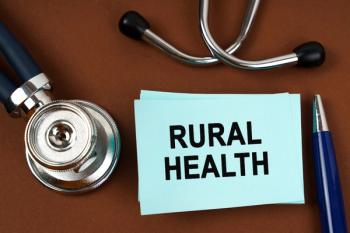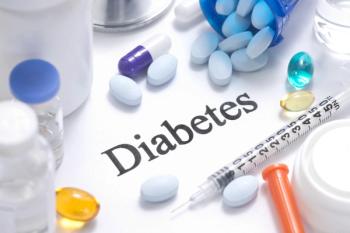
- Medical Economics July 2020 Edition
- Volume 97
- Issue 11
Overcoming racial biases in patient care
Because the majority of physicians are white and male, the unconscious assumptions they may hold about patients who are neither white nor male can lead to inappropriate treatment decisions, and on a larger scale, worsen disparities in health outcomes.
James Ellzy, M.D., FAAFP, is a board-certified family physician, an assistant professor at the Uniformed Services University of the Health Sciences and served for 22 years in the U.S. Navy, where he attained the rank of captain.
In spite of his sterling credentials, Ellzy, who is also a board member of the American Academy of Family Physicians (AAFP), says he frequently encounters double-takes the first time he meets with patients at his clinical practice at the Fort Belvoir Family Medicine Residency in Virginia. In part, he says, the response is due to looking younger than his 49 years. But mostly it’s because he is African American, while many of his patients are white.
It’s not that these patients are overtly racist or necessarily aware of holding any biases against African Americans. Still, he adds, “I notice the look on their face when I first meet them that says, ‘this isn’t who I was expecting to see.’”
The “this isn’t who I was expecting to see” reaction is an example of what psychologists and others who study human behavior call “implicit bias”: the unconscious, usually negative assumptions humans make about others they perceive as being in some way different from themselves.
While implicit (or “unintended”) bias affects nearly everyone, its consequences are especially significant in medicine. Because the majority of physicians are white and male, the unconscious assumptions they may hold about patients who are neither white nor male can lead to inappropriate treatment decisions, and on a larger scale, worsen disparities in health outcomes.
The good news is that as understanding of implicit bias grows, so do techniques for combatting it. Increasing numbers of health care institutions, physician organizations, and medical schools are developing training programs to help doctors recognize unintended bias and prevent it from affecting their medical decision-making.
The roots of implicit bias
By itself, experts say, implicit bias is neither good nor bad. Rather, it is a result of the brain performing one of its primary evolutionary functions — absorbing and organizing the information constantly bombarding it and guiding our actions based on that information.
“It’s our brains trying to function at maximum capacity by finding patterns among information or events or groups of individuals as a way of enabling us to make decisions without really thinking about it,” explains Kierra S. Barnett, M.P.H., a doctoral candidate in public health at the Kirwan Institute for the study of Race and Ethnicity at Ohio State University in Columbus.
Although this form of information processing is highly efficient — and indeed vital to humans’ ability to function on a day-to-day level — psychologists note that it comes with a significant drawback: some of the information it takes in produces, or reinforces, negative stereotypes about others based on attributes such as their race, gender, ethnicity, and sexual orientation.
Michelle van Ryn, Ph.D., M.P.H., a professor at the Oregon Health and Sciences University School of Nursing who has studied and written extensively about stereotypes and implicit bias, cites the example of an experiment where two groups of white peoplewere given an account of the same crime, except that in one account the criminal has a name usually associated with African Americans.
The people in the group reading that account were more likely to recall the violent aspects of the crime than was the group who assumed the criminal was white, she says, which in turn reflects the pervasive images of African Americans as violent criminals in the news and entertainment media.
“So implicit biases are basically this [learning] system applying whatever information it’s learned, even if it’s negative and inaccurate, to whole groups of people,” she explains. Moreover, unless the process is interrupted, the brain will engage in confirmation bias by focusing on events or actions confirming what we think we already know about those groups, van Ryn says.
Unequal treatment, unequal outcomes
The impact of unintended bias, both in individual physician-patient encounters and outcome disparities, has been well-documented in research studies, most notably in an influential 2003 Institute of Medicine report on racial and ethnic disparities in health care. It found evidence that “stereotyping, biases and uncertainty on the part of health care providers can all contribute to unequal treatment.” Moreover, even white clinicians who don’t believe they are prejudiced “typically demonstrate unconscious implicit negative racial attitudes and stereotypes.”
More recently, a 2016 study published in the Journal of Clinical Oncology examined interactions between black patients and white oncologists who had been administered a test for their levels of implicit bias. (See sidebar, “Measuring Implicit Bias”).
It found that oncologists who rated higher in implicit racial bias had shorter interactions with their patients, and their patients rated the interactions as “less patient-centered and supportive” than those with less implicit bias. The study also found links between a physician’s bias level and their patients’ confidence in recommended treatments and more perceived difficulty in completing them.
Louis Penner, Ph.D., professor emeritus in the oncology department at Wayne State University School of Medicine and lead author of the study, notes that the results highlight another harmful result of implicit bias: patients are able to recognize their physician’s attitude and, as a result, become less likely to adhere to treatment recommendations.
“One of the effects we and other researchers have demonstrated in a variety of medical contexts is that if the doctor is high in implicit bias, the patient leaves the interaction with the feeling the doctor doesn’t really care about them, they don’t trust the doctor, and the treatment may not work,” he says.
In the case of cancer treatment, with its expense and unpleasant side effects, the result may well be high rates of non-adherence or sometimes stopping treatment entirely — outcomes which can, in turn, shape doctors’ treatment decisions.
“What happens in a lot of cases is black patients are underdosed and the rationale many physicians give is, ‘the patient’s probably not going to do the treatment anyway, so why should I make him that sick?’” Penner explains.
Accepting the reality of implicit bias
While many people have difficulty acknowledging that their actions are influenced by unconscious biases, the concept is particularly troubling for doctors, who have been trained to view — and treat — patients equally, and the vast majority of whom sincerely believe that they do.
“Doctors have been molded throughout medical school and all our training to be non-prejudiced when it comes to treating patients,” says James Allen, M.D., a pulmonologist and medical director of University Hospital East, part of Ohio State University’s Wexner Medical Center. “It’s not only asked of us, it’s demanded of us, so many physicians would like to think they have no biases. But it’s not true. All human beings have biases.”
“Among physicians, there’s a huge stigma attached to any suggestion of racial bias,” adds Penner. “And were a person to be identified that way, there could be very severe consequences in terms of their career prospects or even maintaining their license.”
Ironically, as Penner and others point out, the conditions under which most doctors practice today — high levels of stress, frequent distractions, and hurried visits that allow little time to get to know patients — are the ones most likely to heighten their vulnerability to unintentional biases.
“A doctor under time pressure from a backlog of overdue charting and whatever else they’re dealing with will have a harder time treating all patients with the same level of empathy and concern,” van Ryn says.
Learning to minimize the impact
So what can physicians and health care organizations do to address these biases? Because the process that produces them is “hardwired,” eliminating them is next to impossible, experts say. Instead, the focus should be on reducing their impact on doctor-patient interactions and medical decision-making. And that process begins by just recognizing that they exist, says Preshuslee Thompson, a training and development specialist at the Kirwan Institute.
“Once you become aware of your biases, you can kind of bring them to your conscious mind and be able to say, ‘I know I have this bias, so I’ll keep it in mind while I’m working with this patient, or I know that some circumstances make me more susceptible to my implicit biases so I’ll try to avoid those when I’m making decisions about my patients,’ ” she says.
Conversely, according to Barnett, “If you’re not going to acknowledge those biases, then you’re going to continue to allow your brain to work on autopilot and be influenced by them.”
Equally important is finding each patient’s unique qualities or features, thereby making it easier to see them as an individual rather than part of a faceless group. Penner cites the example of a white physician’s initial encounter with a patient who’s African American.
“If that doctor views the patient simply as a black woman, the possibility that the doctor’s implicit bias will be activated is much greater than if she’s seen as Mrs. Brown, a retired school teacher and mother of four children. So he’s not looking at a social category, he’s looking at an individual,” Penner says.
“No one is immune to this”
People who have conducted training in identifying and addressing implicit bias also find it helpful to emphasize its pervasiveness. “No one is immune to this, even those of us with the most egalitarian goals of fairness and equality,” says Danielle Jones, MPH, manager of the AAFP’s Center for Diversity and Health Equity. “When you frame it from that perspective, I think it makes people a lot less defensive and more open to having a conversation around, ‘what are my biases, and what can I do to address them’ ”?
That was true for Ohio State’s Allen, who earlier this year participated in a university-sponsored training session on implicit bias, an event he approached with some trepidation.
“I had this fear there were these dark sides of me that I was not aware of and that the training would make me discover that I’m a bad person without realizing it,” he recalls. So he was pleasantly surprised to find that wasn’t the goal of the training, but rather to explore different forms of bias and how to overcome them.
Allen attended the training to learn how to work better with his colleagues, who hail from a wide variety of ethnic, national, and religious backgrounds. But he soon found that it also changed how he relates to patients.
“I think it has resulted in my taking more of a shared decision-making approach in caring for my patients, rather than paternalistically dictating what the patient has to do,” he says. “Now, I’m more sensitive to personalizing care plans depending on whether the patient wants to be more aggressive or less in their treatment.”
Another useful technique for reducing the impact of unintentional bias is byundermining stereotypes. For example, in her group training sessions, Jones might present a case study about an African American patient who’s frequently late to appointments and ask participants to discuss factors that might account for the patient’s behavior, such as difficulty finding reliable transportation.
“The goal is to find additional information or context to minimize that immediate reaction of assuming that the stereotype is true,” Jones says.
Jones encourages doctors to practice mindfulness as a way of counteracting the bias that can result from not being able to spend much time with patients. The situation may lead to assumptions — or what Jones calls “mental shortcuts” — about patients.
“These mental shortcuts are where bias kind of sneaks in,” she explains. “So when we talk about mindfulness we’re trying to make doctors aware this could be happening, and get them to maybe consider alternatives in their clinical decision-making and patient interactions.” Doing so, she adds, can also help physicians develop empathy for, and build relationships with, their patients.
While not attributing it to mindfulness, Allen says that as a result of his training he now makes a point of chatting with patients about what’s going on in their lives, such as what they did on vacation or how their children are doing. Such conversations usually add no more than a minute or two the visit, and Allen feels it is time well spent.
“It allows me to build those ties that come from showing my interest in them as unique people,” he says. “And hopefully it lets them see that I care about them as a person and not a bunch of skin and bones that happens to have a disease.”
Articles in this issue
over 5 years ago
Coding case studies: Asthmaover 5 years ago
Your telehealth reimbursement questions, answeredover 5 years ago
Personalize care to improve patient heart healthover 5 years ago
Drowning in dataover 5 years ago
Is this the end of the independent physician?over 5 years ago
Telehealth compliance programs avoid and mitigate riskover 5 years ago
Fanning the flames: the impact of COVID-19 on physician burnoutover 5 years ago
4 myths about succession planning for physician practicesover 5 years ago
5 things COVID-19 is teaching us about the patient experienceover 5 years ago
Political contributions:What to know before you donateNewsletter
Stay informed and empowered with Medical Economics enewsletter, delivering expert insights, financial strategies, practice management tips and technology trends — tailored for today’s physicians.


















